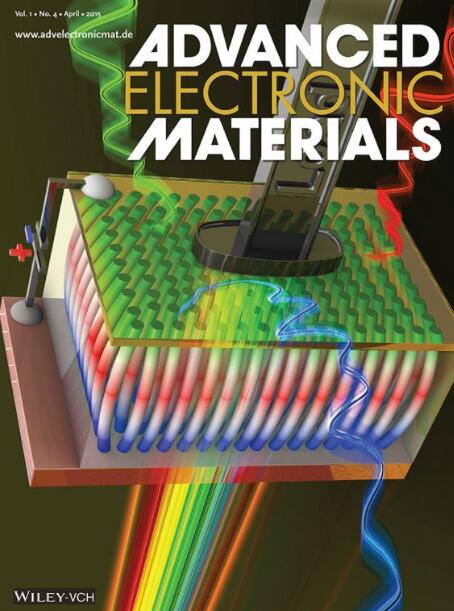Cr掺杂V2O3阻性开关时的体积收缩是电子应用的关键机制
IF 5.3
2区 材料科学
Q2 MATERIALS SCIENCE, MULTIDISCIPLINARY
引用次数: 0
摘要
电子时代的兴起引发了对越来越快、越来越小的开关的追求,因为这种元件在任何电子电路中都是无处不在的,是调节电流流动的基础。莫特绝缘体是满足这一需求的有希望的候选者,因为它们在雪崩现象引发的电场下进行极快的电阻开关。然而,最终切换状态的性质仍在争论中。对原型Mott绝缘体(V0.95Cr0.05)2O3进行的空间分辨微X射线衍射成像和微拉曼实验表明,电阻开关与由等对称压缩相组成的导电丝状路径的产生有关,而没有任何化学或对称性变化。这有力地表明雪崩引发的电阻开关机制继承自带宽控制的Mott - Hubbard跃迁,就像最近在同一系统中研究的激光诱导绝缘体到金属跃迁一样。因此,这一发现可能会使电子学的一个新分支——电机电子学的发展更加容易。本文章由计算机程序翻译,如有差异,请以英文原文为准。
Volume Contraction Upon Resistive Switching in Cr‐Doped V2O3 as a Key Mechanism for Mottronics Applications
The rise of the electronic age sparked a quest for increasingly faster and smaller switches, since this element is ubiquitous and foundational in any electronic circuit to regulate the flow of current. Mott insulators are promising candidates to meet this need as they undergo extremely fast resistive switching under electric field initiated by an avalanche phenomena. However, the nature of the final switched state is still under debate. The spatially resolved micro‐X‐ray Diffraction imaging and micro‐Raman experiments carried out on the prototypal Mott insulator (V0.95 Cr0.05 )2 O3 show that the resistive switching is associated with the creation of a conducting filamentary path consisting in an isosymmetric compressed phase without any chemical or symmetry change. This strongly suggests that the avalanche initiated resistive switching mechanism is inherited from the bandwidth‐controlled Mott‐Hubbard transition just like the laser induced insulator to metal transition recently studied in the same system. This discovery may hence ease the development of a new branch of electronics called Mottronics.
求助全文
通过发布文献求助,成功后即可免费获取论文全文。
去求助
来源期刊

Advanced Electronic Materials
NANOSCIENCE & NANOTECHNOLOGYMATERIALS SCIE-MATERIALS SCIENCE, MULTIDISCIPLINARY
CiteScore
11.00
自引率
3.20%
发文量
433
期刊介绍:
Advanced Electronic Materials is an interdisciplinary forum for peer-reviewed, high-quality, high-impact research in the fields of materials science, physics, and engineering of electronic and magnetic materials. It includes research on physics and physical properties of electronic and magnetic materials, spintronics, electronics, device physics and engineering, micro- and nano-electromechanical systems, and organic electronics, in addition to fundamental research.
 求助内容:
求助内容: 应助结果提醒方式:
应助结果提醒方式:


